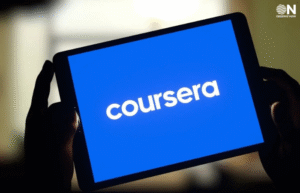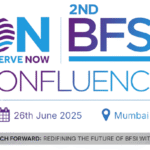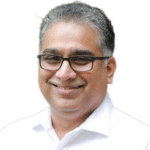Bridging the Gender Gap in STEM: Advancing Opportunities for Women and Girls in Science

Background

Historically a significant gender gap has persisted throughout the years at all levels of science, technology, engineering and mathematics (STEM) disciplines all over the world. Even though women have made tremendous progress towards increasing their participation in higher education on, they are still under-represented in these fields. Gender equality has always been a core issue. Gender equality and the empowerment of women and girls will make a crucial contribution not only to economic development of the world, but to progress across all the goals and targets of the 2030 agenda for sustainable development, as well.
International Day of Women and Girls in Science is observed on February 11th each year. This date was chosen to honour the birthday of Marie Curie, a pioneering physicist and chemist who made ground breaking contributions to the fields of radioactivity and nuclear physics. Marie Curie remains an inspirational figure for women in science. As we approach the International Day of Women and Girls in Science on February 11, it’s essential to reflect on the current landscape of women in STEM and the role of universities in fostering scientific research and innovation. It aims to break down barriers and stereotypes that have historically limited the participation of women in these fields.
Significance and Objectives: The primary objectives of International Day of Women and Girls in Science include:
Promoting Gender Equality: The day emphasizes the importance of achieving gender equality in STEM disciplines, encouraging equal opportunities for women and girls in scientific education and careers.
Highlighting Achievements: It celebrates the accomplishments and innovations of women scientists, showcasing their contributions to research, technology, and scientific advancements.
Inspiring Future Generations: International Day of Women and Girls in Science serves as an inspiration for young girls and students to pursue studies and careers in STEM fields, challenging stereotypes and biases.
Advocating for Inclusion: The day calls for greater inclusion of women in decision-making processes and leadership roles within the scientific community.
Current Statistics on Women in STEM
Globally, women constitute over half of all tertiary education students; however, their representation in STEM fields remains disproportionately low. Between 2018 and 2023, women accounted for only 35% of STEM graduates, a figure that has remained stagnant over the past decade. In India, the scenario reflects similar challenges. Women hold approximately 14% of STEM jobs, indicating a significant gender gap in the workforce. Despite an increase in the number of women enrolling in science disciplines—from 2.6 million in 2016-2017 to 2.9 million in 2020-2021—their participation in STEM careers remains limited.
Role of Universities in Encouraging More Women to Pursue Careers in Science
Higher educational institutions and universities play a pivotal role in bridging the gender gap in STEM. By implementing targeted initiatives, they can create an inclusive environment that encourages women to pursue scientific careers. For instance, the University Grants Commission (UGC) in India has proposed the establishment of “Innovation Universities,” with grants ranging from Rs.100 crores to Rs.300 crores over five years, aiming to foster innovation and research excellence.
Inspiring More Young Girls to Take Up Science and Technology as a Career
Early exposure to STEM can significantly influence young girls’ career choices. Programs like the Atal Innovation Mission (AIM) in India promote a culture of innovation and entrepreneurship through initiatives such as Atal Tinkering Labs in schools, providing hands-on experience in science and technology.
Fostering of Stronger Culture of Scientific Research and Innovation Among Students by the Universities & Higher Education Institutions
To cultivate a robust research culture, universities must invest in infrastructure and provide ample opportunities for student engagement in research. The Department of Science and Technology (DST) in India supports initiatives like the Promotion of University Research and Scientific Excellence (PURSE) and the Fund for Improvement of S&T Infrastructure (FIST), which aim to strengthen research facilities and encourage scientific excellence in universities.
Key Initiatives by Institutions to Promote Scientific Learning and Discovery
Many institutions have launched programs to enhance scientific learning. For example, the National Quantum Mission (NQM) in India, with a budget of Rs.6,003.65 crore over eight years, seeks to develop a vibrant ecosystem in Quantum Technology, promoting both scientific research and industrial R&D.
Conclusion
International Day of Women and Girls in Science is a reminder of the importance of diversity and inclusivity in the scientific community. It recognizes that women and girls have made significant contributions to STEM fields throughout history and deserve equal opportunities and recognition. On this day, we celebrate the women and girls who have shattered barriers and paved the way for future generations of scientists. It is an opportunity to reaffirm our commitment to gender equality in science and to encourage young minds to explore the endless possibilities of STEM. Though progress has been made in promoting women’s participation in STEM and fostering a culture of research and innovation, there is still considerable work to be done. Universities, policymakers, and society must continue to collaborate to create an inclusive and supportive environment that encourages all individuals to pursue and excel in scientific fields. Let us continue to support and empower women and girls in science, ensuring that their voices and talents are heard and valued in the quest for knowledge and innovation.
Author: Prof. Ashok Sangappa Alur, Vice Chancellor, Kodagu University, Government of Karnataka
Disclaimer: The views expressed in this article are solely those of the author and do not necessarily reflect the opinions or policies of ObserveNow Media. The author is solely responsible for ensuring the accuracy, completeness, and validity of the information presented, encouraging readers to independently verify and seek professional advice if needed.
















